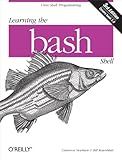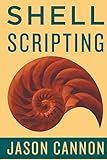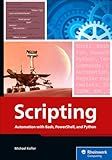Best Bash Scripting Tools to Buy in December 2025

Learning the bash Shell: Unix Shell Programming (In a Nutshell (O'Reilly))
- QUALITY ASSURED: GENTLY USED BOOKS READY FOR NEW ADVENTURES.
- ECO-FRIENDLY CHOICE: SAVE TREES WHILE ENJOYING GREAT READS!
- AFFORDABLE PRICES: DISCOVER GREAT LITERATURE AT BUDGET-FRIENDLY RATES.



Shell Scripting: How to Automate Command Line Tasks Using Bash Scripting and Shell Programming



Classic Shell Scripting



Scripting: Automation with Bash, PowerShell, and Python—Automate Everyday IT Tasks from Backups to Web Scraping in Just a Few Lines of Code (Rheinwerk Computing)



BASH Guide



Shell Scripting: Expert Recipes for Linux, Bash, and more


To use any bash command in a bash function, you simply need to define the desired command within the function block. You can include any valid bash command or series of commands within the function. For example, you can create a function that checks for the existence of a file using the 'ls' command, or performs a mathematical operation using the 'expr' command. By encapsulating the command within a function, you can easily call and execute it whenever needed in your bash script. Remember to include the necessary syntax and parameters for the command within the function definition to ensure it runs correctly.
What is the use of local variables in a bash function?
Local variables in a bash function are used to store temporary data that is needed only within the scope of that function. By declaring a variable as local, it does not affect any variables with the same name outside of the function, thus preventing unintended side effects and reducing the risk of naming conflicts. This allows for better organization of code and ensures that variables are used only where they are needed.
What is a bash alias and how is it related to functions?
A bash alias is a shortcut or nickname for a command or series of commands in the bash shell. You can create an alias using the alias command, followed by the alias name and the command you want to associate with it. For example, you could create an alias like this:
alias ll='ls -la'
This would create an alias ll for the command ls -la, so when you type ll in the terminal, it would be equivalent to running ls -la.
Aliases are related to functions in that both can be used to create shortcuts for executing commands or scripts. The main difference is that aliases are restricted to simple command substitutions, while functions can contain multiple commands and more complex logic. Functions are defined using the function keyword or by simply defining a function name followed by the necessary code in curly braces.
Here is an example of a simple function that accomplishes the same task as the alias above:
ll() { ls -la }
You could then execute ll in the terminal and it would output the same as ls -la. Functions are more flexible and versatile than aliases, but aliases are simpler and more concise for basic command substitutions.
What is the importance of returning a value from a bash function?
Returning a value from a bash function is important because it allows the function to communicate the result of its execution to the calling code. The value returned by the function can be used by the calling code to make decisions, perform further operations, or handle errors. By returning a value, the function becomes more versatile and flexible, as it can be used in different contexts and scenarios. Additionally, returning a value allows the function to be tested more easily, as the output can be compared against expected results.
